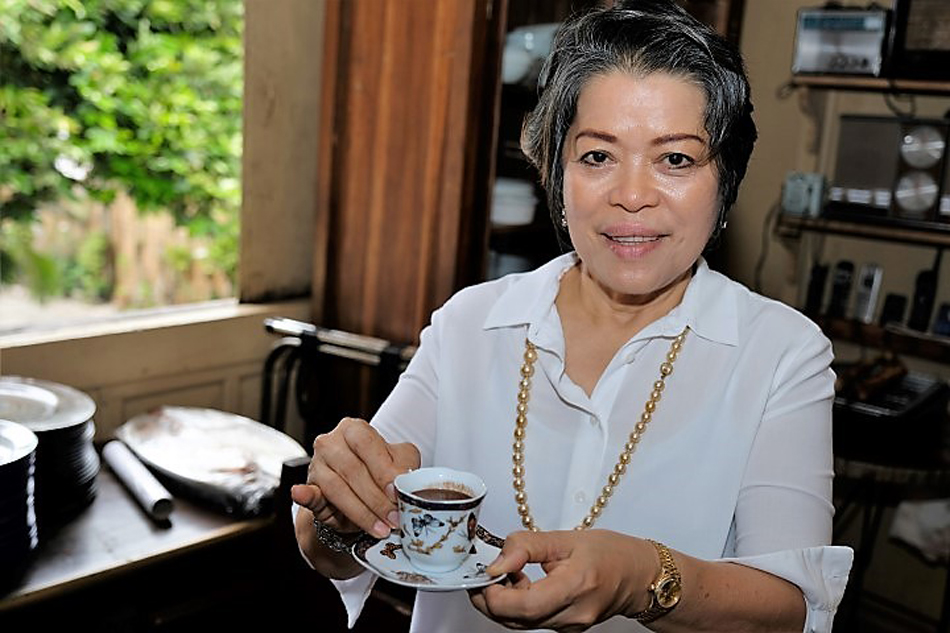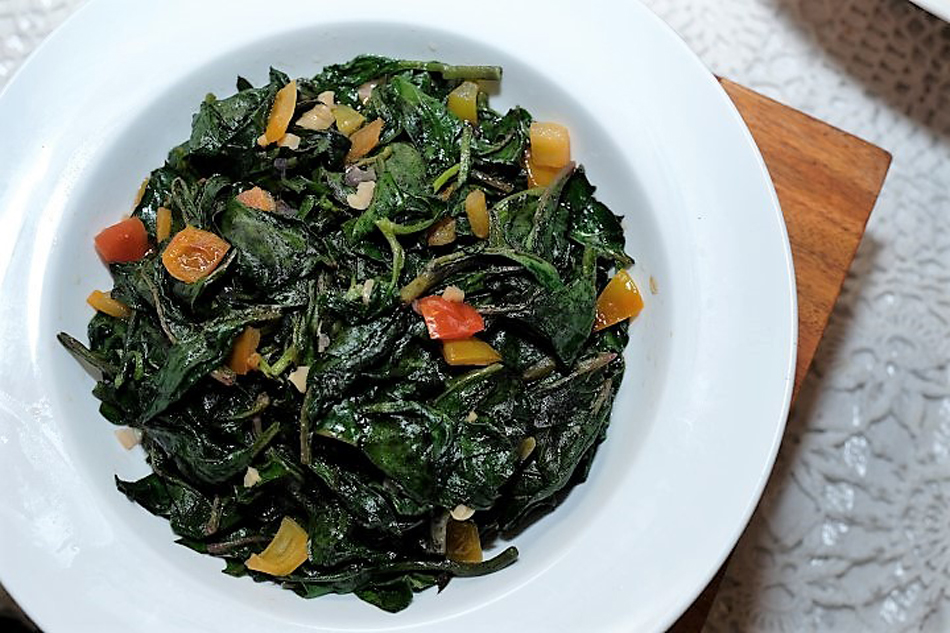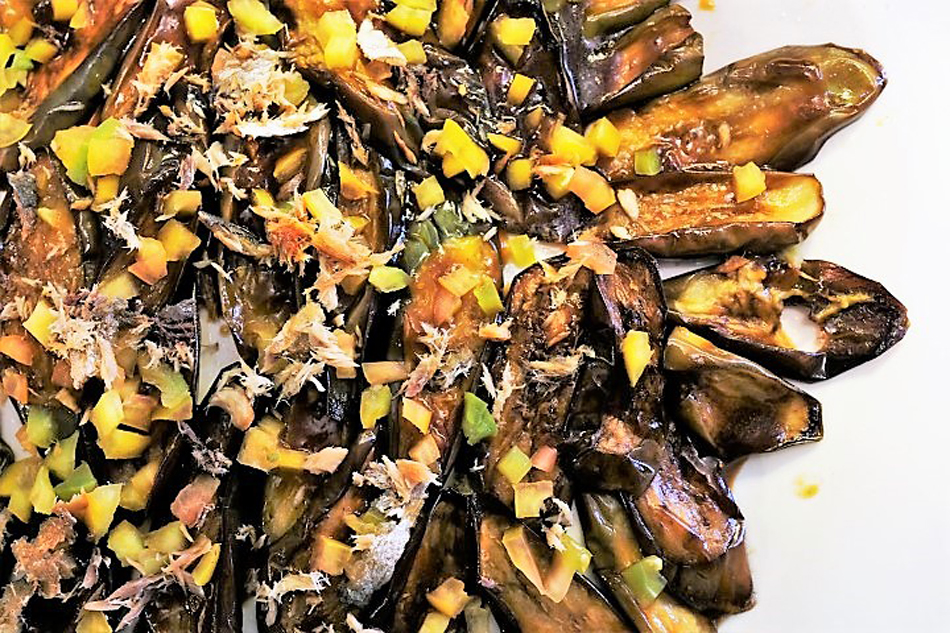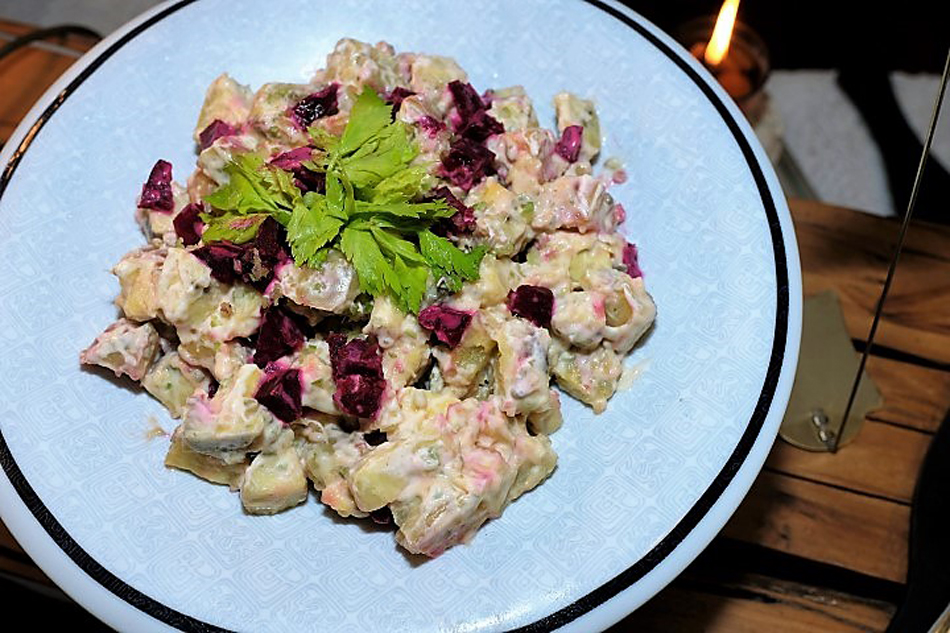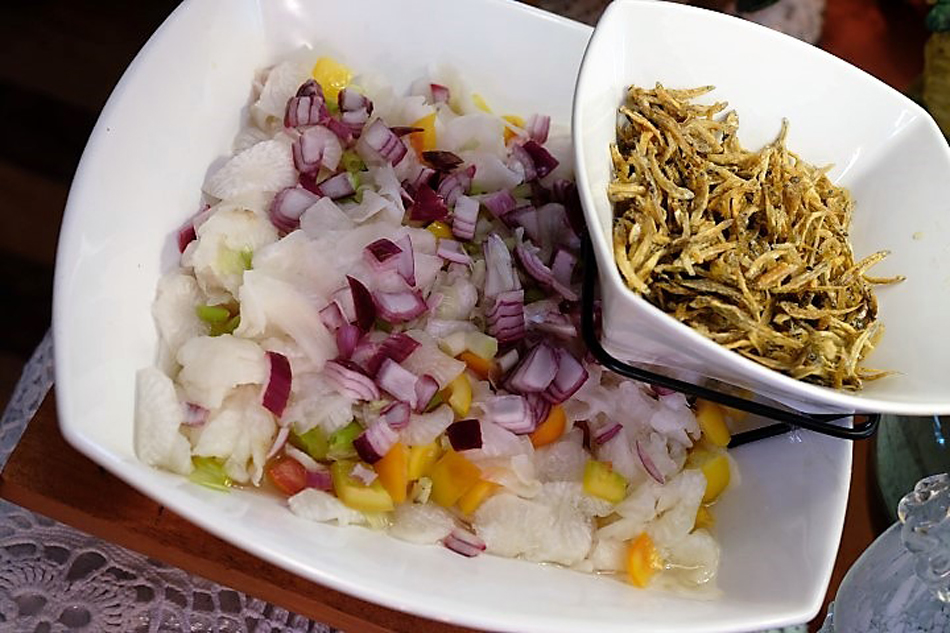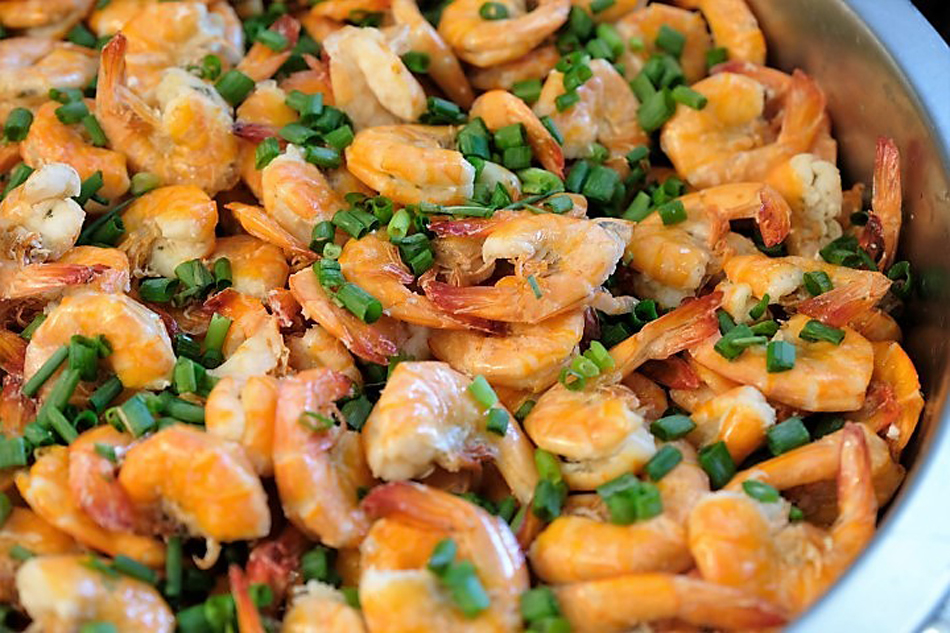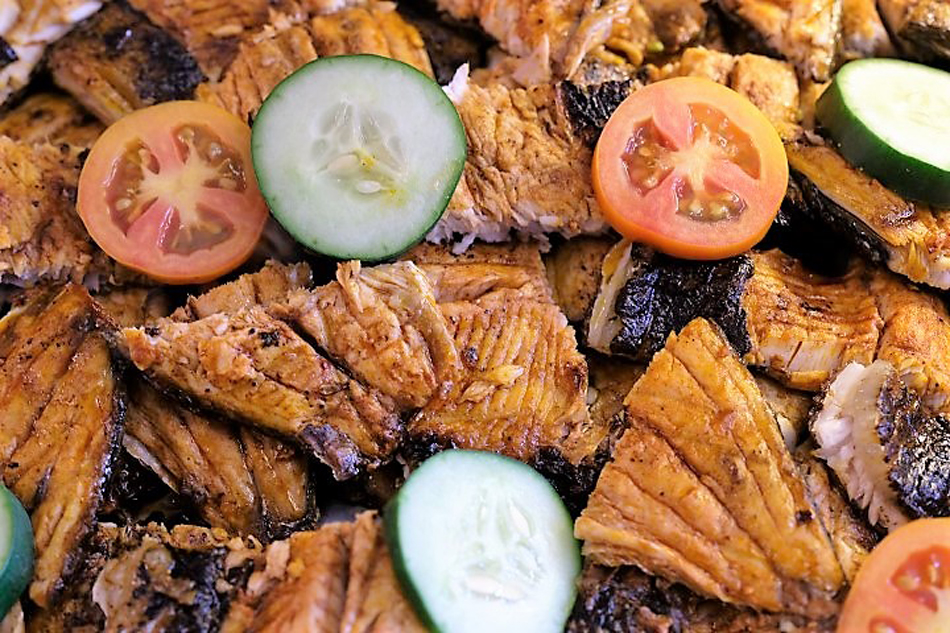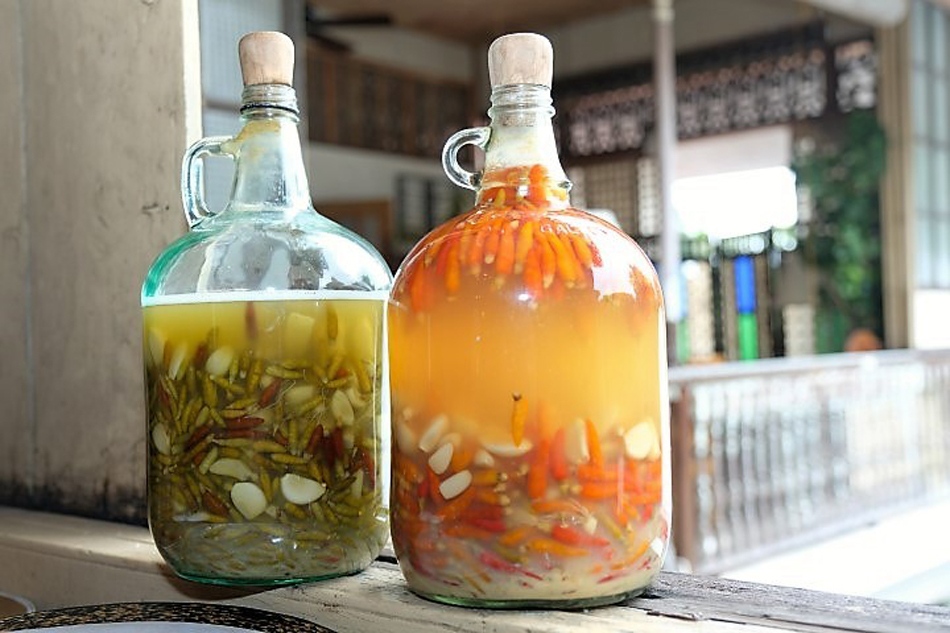Iloilo eats: Camiña Balay Nga Bato serves heirloom dishes amid history | ABS-CBN

Welcome, Kapamilya! We use cookies to improve your browsing experience. Continuing to use this site means you agree to our use of cookies. Tell me more!
Iloilo eats: Camiña Balay Nga Bato serves heirloom dishes amid history
Iloilo eats: Camiña Balay Nga Bato serves heirloom dishes amid history
Jeeves de Veyra
Published Mar 25, 2018 07:08 AM PHT
ILOILO -- A meal at Camiña Balay Nga Bato is like stepping into a time machine at a dinner table. Not only does one get a serving of authentic heirloom Iloilo cuisine, one is also given a peek into Iloilo’s storied past.
ILOILO -- A meal at Camiña Balay Nga Bato is like stepping into a time machine at a dinner table. Not only does one get a serving of authentic heirloom Iloilo cuisine, one is also given a peek into Iloilo’s storied past.
One must try to visit the beautiful stone house when Luth Camiña, the 4th generation owner, is in residence. She is a treasure trove of information and anecdotes about the grand house made of stone.
One must try to visit the beautiful stone house when Luth Camiña, the 4th generation owner, is in residence. She is a treasure trove of information and anecdotes about the grand house made of stone.
The 150-year-old house was designed by the first parish priest of Molo, Anselmo Avancena, for Don Fernando Avanceño, who died a holy man healing the sick. It was then passed on from one family to another until it came under the Camiñas family.
The 150-year-old house was designed by the first parish priest of Molo, Anselmo Avancena, for Don Fernando Avanceño, who died a holy man healing the sick. It was then passed on from one family to another until it came under the Camiñas family.
Camiña persuaded the clan to open the house to the public. Since then the house has been awarded by the city of Iloilo for best adaptive reuse and it has been designated by the National Museum and the National Commission for Culture and the Arts as an Important Cultural Property.
Camiña persuaded the clan to open the house to the public. Since then the house has been awarded by the city of Iloilo for best adaptive reuse and it has been designated by the National Museum and the National Commission for Culture and the Arts as an Important Cultural Property.
ADVERTISEMENT
Camiña Balay Nga Bato is an underrated tourist attraction. I have never even heard of this restaurant before this visit, which was arranged by AirAsia. I’m glad I was able to soak in some culture and history in a place like this old stone house, which is a great place to visit for food, fhistory, and Camiña’s stories of Iloilo.
Camiña Balay Nga Bato is an underrated tourist attraction. I have never even heard of this restaurant before this visit, which was arranged by AirAsia. I’m glad I was able to soak in some culture and history in a place like this old stone house, which is a great place to visit for food, fhistory, and Camiña’s stories of Iloilo.
“Iloilo is a place where the past is always present. The Camiña Balay Nga Bato is a testament to conserving and preserving our heritage. All of this is for culture and the arts, and maybe redemption of Iloilo City as another tourist site,” she said.
“Iloilo is a place where the past is always present. The Camiña Balay Nga Bato is a testament to conserving and preserving our heritage. All of this is for culture and the arts, and maybe redemption of Iloilo City as another tourist site,” she said.
The first floor of the house is home to a store selling gfood products and cooking accessories used in this unique restaurant. Tablea, suka, homemade sinamak, batirol for making tsokolate-eh, as well as native woven fabrics can be bought here. The rest of the floor has mementos such as the first grand piano in Iloilo and other antiques on display.
The first floor of the house is home to a store selling gfood products and cooking accessories used in this unique restaurant. Tablea, suka, homemade sinamak, batirol for making tsokolate-eh, as well as native woven fabrics can be bought here. The rest of the floor has mementos such as the first grand piano in Iloilo and other antiques on display.
The second floor houses the living room and the dining room connected by a central landing. The sala mayor (living room) is typical of the architecture of that age. The room is airy with ventanas (big panoramic windows) allowing the circulation of cool air from the ventanilla (lower vents) up to the ventilacion (upper vents).
The second floor houses the living room and the dining room connected by a central landing. The sala mayor (living room) is typical of the architecture of that age. The room is airy with ventanas (big panoramic windows) allowing the circulation of cool air from the ventanilla (lower vents) up to the ventilacion (upper vents).
Camiña proudly gestured to points of interest around the room including European furniture probably shipped by sea via the Manila-Acapulco galleon trade, huge picture frames from the Paris World Expo around the turn of the century, muwebles from Vienna, and flotsam from typhoons painted by local artists.
Camiña proudly gestured to points of interest around the room including European furniture probably shipped by sea via the Manila-Acapulco galleon trade, huge picture frames from the Paris World Expo around the turn of the century, muwebles from Vienna, and flotsam from typhoons painted by local artists.
It was definitely a major undertaking to restore the hourse and turn it into a place that welcomes the public. It is not only a restaurant, but also part of the current Camiña residence, giving it that warm lived-in feel instead of a foreboding sterile museum vibe.
It was definitely a major undertaking to restore the hourse and turn it into a place that welcomes the public. It is not only a restaurant, but also part of the current Camiña residence, giving it that warm lived-in feel instead of a foreboding sterile museum vibe.
As Camiña led diners to the dining room, she explained that the meal is patterned by the abre salon, Spanish custom events where houses are opened in the afternoons for food, dance and poetry.
As Camiña led diners to the dining room, she explained that the meal is patterned by the abre salon, Spanish custom events where houses are opened in the afternoons for food, dance and poetry.
The food served at the Camiña Balay Nga Bato reflects the cuisine of the Ilonggo as river people and Iloilo as one of the Philippines' great ports. The kitchen practices farm to table principles as the Camiñas get ingredients from their farm in Guimaras and nearby Jaro. They also consider themselves to be part of the slow food movement as some dishes take 12-hours to prepare.
The food served at the Camiña Balay Nga Bato reflects the cuisine of the Ilonggo as river people and Iloilo as one of the Philippines' great ports. The kitchen practices farm to table principles as the Camiñas get ingredients from their farm in Guimaras and nearby Jaro. They also consider themselves to be part of the slow food movement as some dishes take 12-hours to prepare.
Here's what you can expect here:
Here's what you can expect here:
The Camiña Balay Nga Bato is located at 20 Osmena St., Arevalo, Iloilo City. Buffet is available for a minimum of 10 people. Reservations must be made 3 days before. For more inquiries pls call 033-3363858.
The Camiña Balay Nga Bato is located at 20 Osmena St., Arevalo, Iloilo City. Buffet is available for a minimum of 10 people. Reservations must be made 3 days before. For more inquiries pls call 033-3363858.
ADVERTISEMENT
ADVERTISEMENT


